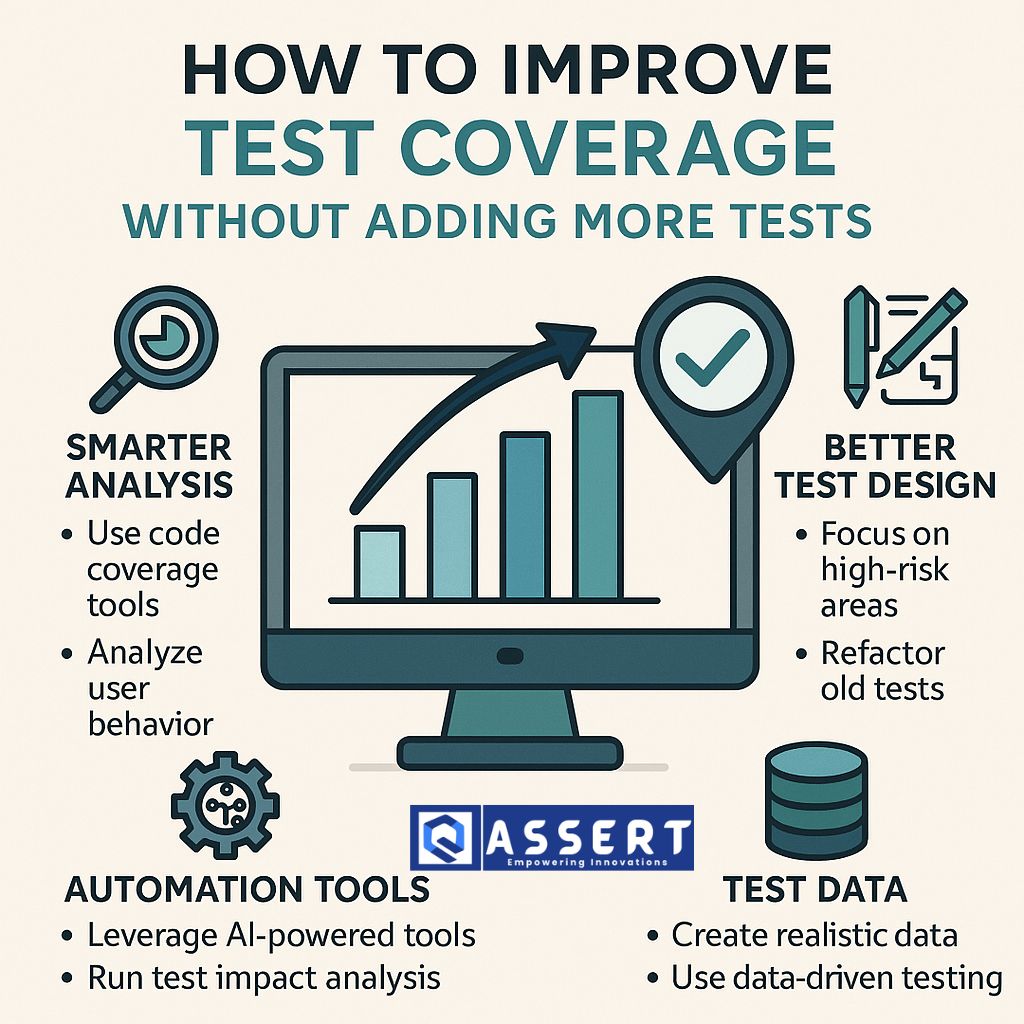Every tester wants high test coverage, but writing more and more test cases takes time and effort. The good news is — you can improve test coverage without adding more tests.
In this blog, we’ll learn how to get better coverage using smarter methods, automation tools, and effective test design.
What Is Test Coverage?
Test coverage measures how much of your application is tested by automation or manual tests. It helps you understand what parts of the code, features, or user flows are already tested — and what’s missing.
Higher coverage usually means fewer bugs reach production, but it doesn’t always mean better quality. The goal is smart coverage, not just more tests.
1. Use Code Coverage Tools
Tools like JaCoCo, Istanbul, or Codecov help you see which parts of your code are not covered by tests.
By analyzing the coverage report, you can focus your efforts on untested logic, rather than writing random new tests.
🔗 Learn more: https://www.jacoco.org
2. Focus on High-Risk Areas
Not every feature needs the same level of testing. Focus more on:
-
Core business features
-
Areas with frequent code changes
-
Modules that often fail
By prioritizing these parts, you can improve overall coverage without increasing test count.
3. Combine Unit, API, and UI Tests Smartly
Many teams write duplicate tests across layers — for example, testing the same function at unit, API, and UI levels.
A smarter way is to:
-
Use unit tests for logic validation
-
Use API tests for data flow
-
Use UI tests only for user journeys
This removes overlap and gives broader, cleaner coverage.
4. Refactor Old Tests
Sometimes, older test cases stop covering important parts of the app due to code changes. Instead of adding new tests, update or refactor existing ones.
Review old test suites regularly to remove duplicates and keep them aligned with current features.
5. Use Test Impact Analysis
Test Impact Analysis (TIA) tools like Azure DevOps TIA or Launchable identify which tests are affected by recent code changes.
This ensures only the most relevant tests run, and missing areas are highlighted automatically — improving coverage intelligently.
🔗 Learn more: https://www.launchableinc.com
6. Analyze User Behavior
You can use analytics tools like Google Analytics or Hotjar to find which user flows are most used.
Then, prioritize testing those paths. This improves real-world coverage even without more test cases.
7. Use AI-Powered Test Optimization
Modern AI tools like Testim, Mabl, or Functionize can analyze your existing test suite and suggest gaps or duplicate tests.
They can even generate smart test data and improve test stability — all without writing new tests manually.
🔗 Learn more: https://www.testim.io
8. Strengthen Your Test Data
Better test data means better coverage. For example, by using more realistic or varied input data, you can catch more edge cases within existing test cases.
You can also use data-driven testing to reuse a single test for multiple scenarios.
9. Improve Collaboration Between Dev and QA
Developers and testers often miss coverage because they don’t fully understand each other’s work.
Regularly reviewing features, user stories, and acceptance criteria together can help identify missing test areas early — before adding new tests.
10. Track Coverage Trends
Use dashboards or CI tools to track your coverage over time. Even small improvements — like better assertions or smarter test logic — can boost real coverage.
Conclusion
You don’t always need more tests to improve test coverage. With the right tools, smarter analysis, and collaboration, you can test better and faster.
Start by focusing on important, high-risk areas and making your existing tests smarter — not longer.




